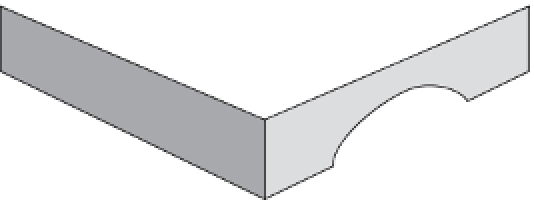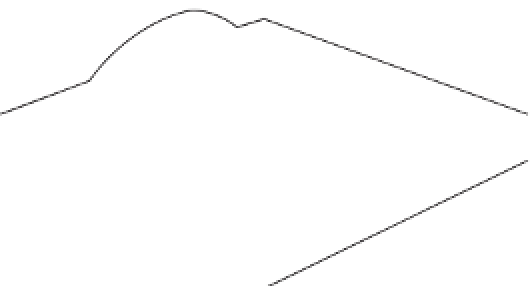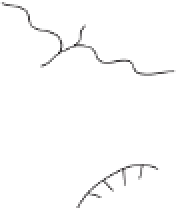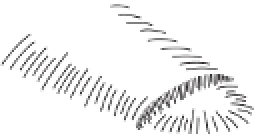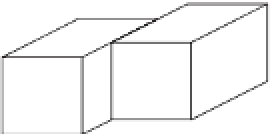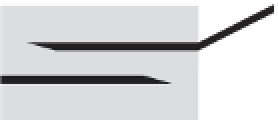Geology Reference
In-Depth Information
along which no or minute differential movement has
taken place.
Time 1
Dip-slip faults
Many tectonic forms result directly from faulting. It is
helpful to classify them according to the type of fault
involved - dip-slip or normal faults and strike-slip faults
and thrust faults (Figure 5.23).
Dip-slip faults
pro-
duce fault scarps, grabens, half-grabens, horsts, and tilted
blocks.
Strike-slip faults
sometimes produce shutter
ridges and fault scarps (p. 144).
Thrust faults
tend to
produce noticeable topographic features only if they are
high-angle thrusts (Figure 5.23c).
Time 2
Fault scarps
The
fault scarp
is the commonest form to arise from
faulting. Many fault scarps associated with faulting dur-
ing earthquakes have been observed. The scarp is formed
on the face of the upthrown block and overlooking the
downthrown block. Erosion may remove all trace of a
fault scarp but, providing that the rocks on either side of
the fault line differ in hardness, the position of the fault
is likely to be preserved by differential erosion. The ero-
sion may produce a new scarp. Rather than being a fault
scarp, this new landform is more correctly called a
fault-
line scarp
. Once formed, faults are lines of weakness,
and movement along them often occurs again and again.
Uplift along faults may produce prominent scarps that
are dissected by streams. The ends of the spurs are 'sliced
off ' along the fault line to produce triangular facets.
Figure 5.22
Gorge development in a snout of a resistant
rock formation by stream persistence across a plunging
anticline.
Source:
After Twidale and Campbell (1993, 354)
called active faults if movement was recent. Faults are
commonly large-scale structures and tend to occur in
fault zones rather than by themselves. A
joint
is a small-
scale fracture along which no movement has taken place,
or at least no differential movement. Joints arise from
the cooling of igneous rocks, from drying and shrinkage
in sedimentary rocks, or, in many cases, from tectonic
stress. Many fractures described as joints are in fact faults
Figure 5.23
Faulted structures. (a) Normal fault. (b) Strike-slip fault. (c) High-angle reverse or thrust fault. (d) Low-angle
thrust fault.
Source:
Adapted from Ahnert (1998, 233)

